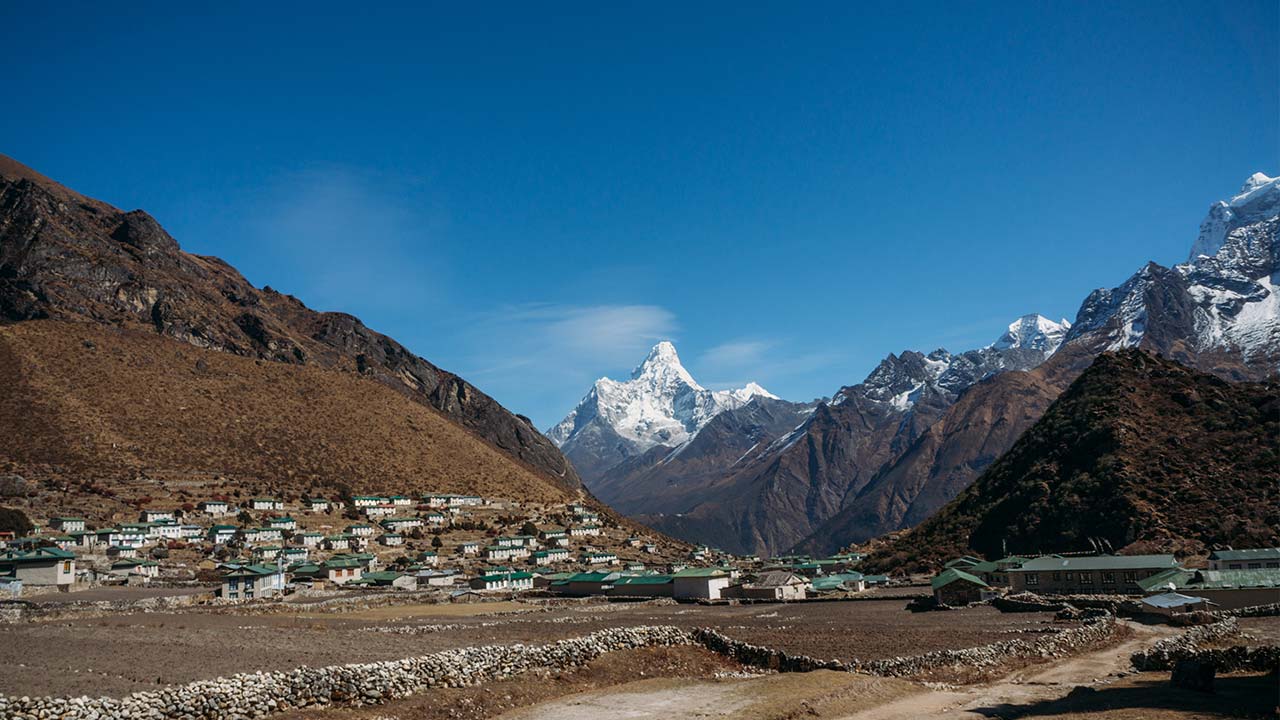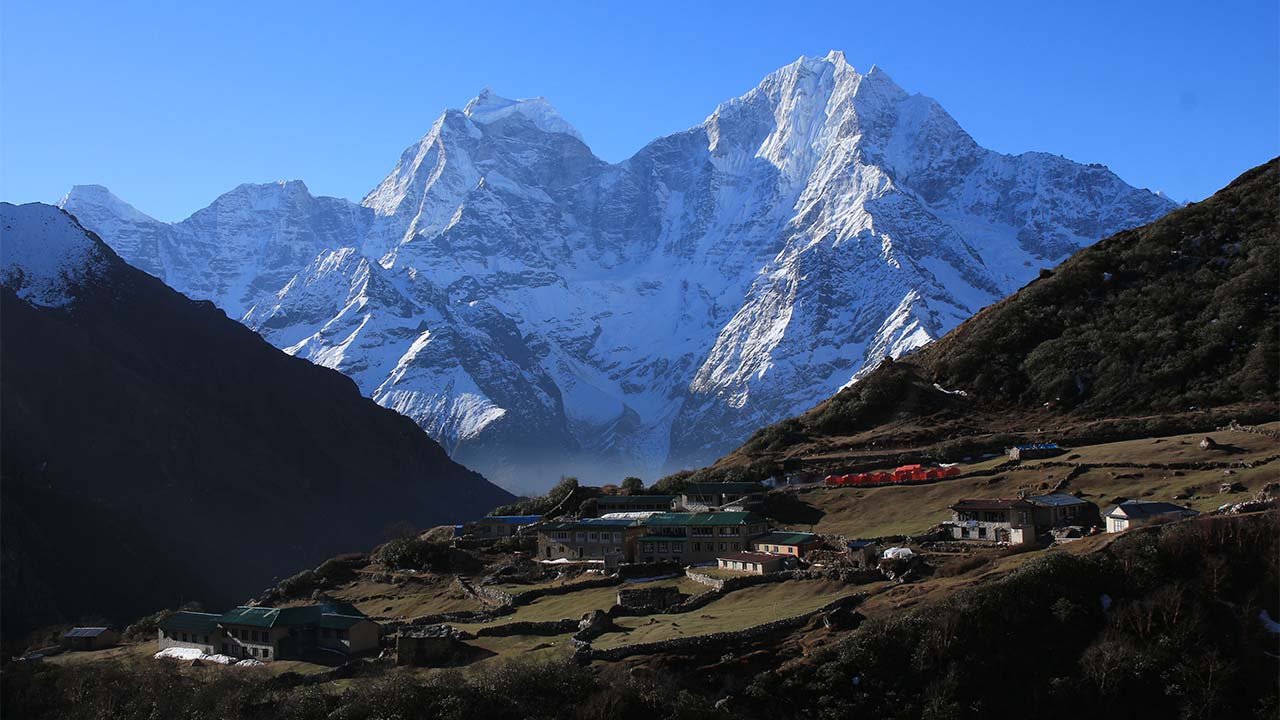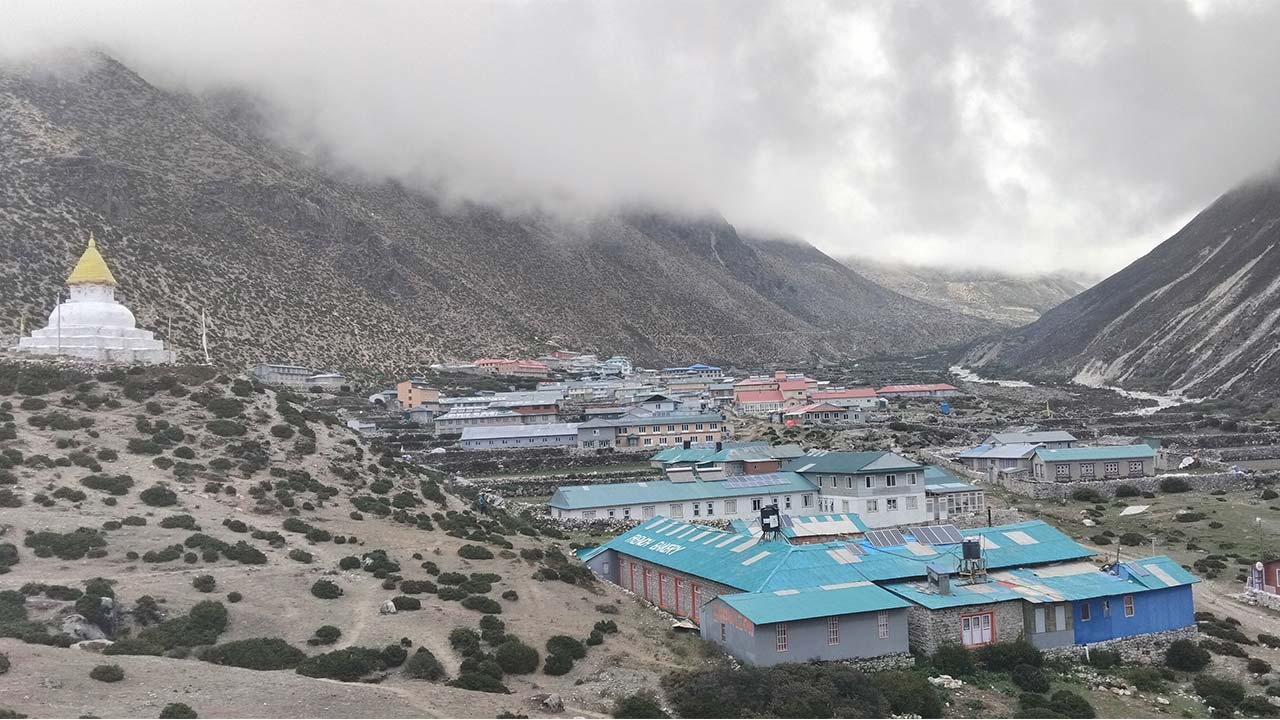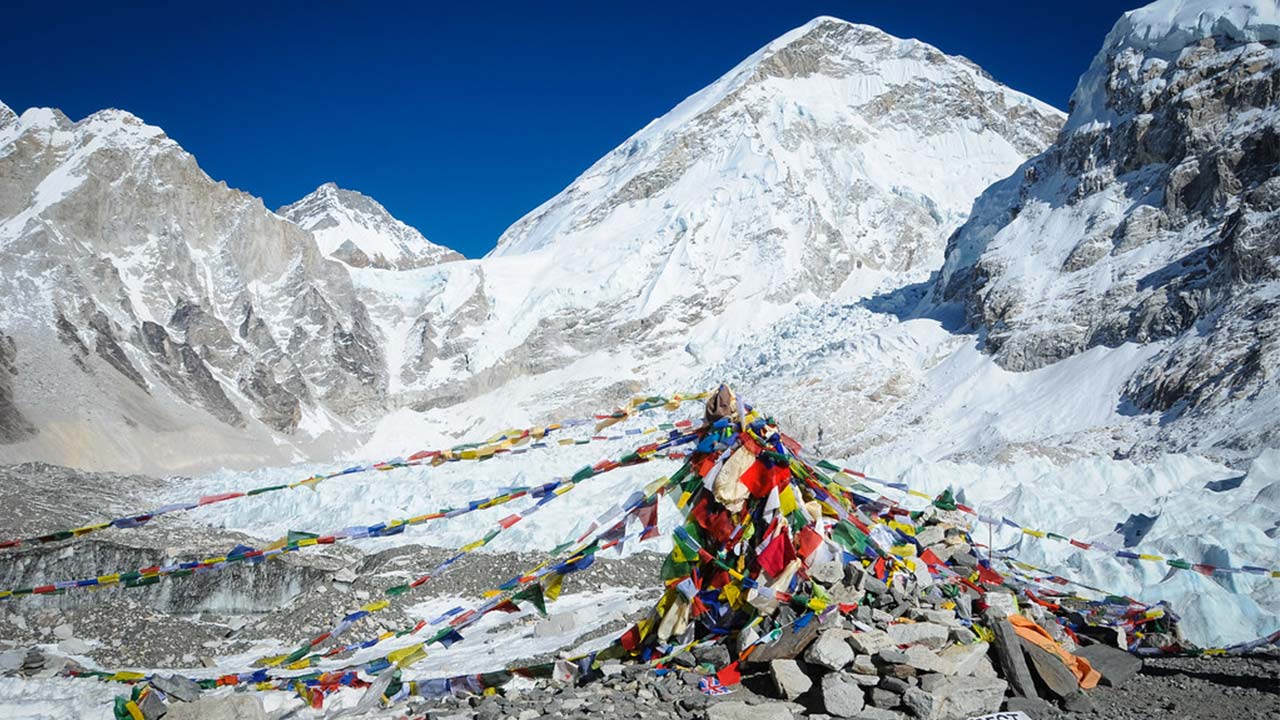The Everest Base Camp Trek is more than just a walk in the Himalayas; it is a once-in-a-lifetime experience that sits high on almost every trekker’s bucket list. For two weeks, you will venture across Sherpa villages, suspension bridges and dramatic mountain valleys, as you gradually push toward the world’s tallest peak. But, besides exhilarating adrenaline pump, each day on this legendary trail also comes with its own set of challenges. While traversing on this oicnoic route, you will have to overcome the steep climbs, thin air conditions, changing weather and even the mental push to keep moving forward.
But among all those days, one question often lingers in the minds of the trekkers: what is the hardest day of Everest Base Camp? The answer is not as simple as it sounds. Some find the steep climb to Tengboche brutal; meanwhile, others feel the altitude effect near Lobuche. Still, many agree that the final push to Everest Base Camp or the early morning climb to Kala Patthar is the ultimate test of this Himalayan journey.
So, today in this article, we will break down the hardest day of the Everest Base Camp trek, explore why it feels so challenging and share how, as a trekker, you can prepare yourself to conquer it.
Understanding Everest Base Camp Trek Difficulty
When trekkers ask about the hardest day of the Everest Base Camp Trek, many might picture one single brutal stretch. But in reality, the difficulty on this high-altitude adventure is a combination of several factors, such as altitude, terrain, distance, weather and how your body copes with each of these elements.
At the start of the trek, between Lukla (2,860 m) and Namche Bazaar (3,440 m), the air still has a higher percentage of oxygen. Steep climbs, like the final push into Namche, can feel tough but manageable for most. However, as you gain height each day and traverse to high-altitude points like Tengboche (3,860 m), Dingboche (4,410 m), Lobuche (4,940 m), and Gorak Shep (5,164 m), the oxygen level in the atmosphere decreases dramatically. By the time you’re walking above 5,000 m, the oxygen level drops to almost 50% of what it is at sea level.
This means even short uphill sections can be physically exhausting in such thin air conditions. Likewise, the terrain also changes as you ascend. During the initial part of the Everest Base Camp Trek, you will walk through pine forests and suspension bridges. But as you climb higher, the terrain transforms into rocky, dusty and uneven stretches. And, you will have to walk around 6 to 8 hours on average on such terrain. If you are not prepared adequately, your energy reserves begin to drain quickly while walking on such rough terrain for multiple hours.
Another layer of Everest Base Camp Trek difficulty comes from acclimatization. If your body adjusts well to the changing atmosphere, the high-altitude days may feel challenging but doable. If your body fails to adjust, you will have to deal with symptoms of altitude sickness like headaches, nausea and dizziness. Suffering from such symptoms can make even a moderate climb feel like the hardest part of the trek. And finally, the weather can turn a relatively simple day into a nightmare. The snowfall, high winds and subzero mornings can add an entirely new dimension of hardship to your journey if you are not trekking within favorable windows.

Hardest Day of Everest Base Camp Trek
On the classic EBC itinerary, most trekkers agree that the day from Lobuche (4,940 m) to Gorak Shep (5,164 m), followed by the hike to Everest Base Camp (5,364 m), stands out as the hardest day of the hardest day of Everest Base Camp. Some trekkers even say that the early morning climb to Kala Patthar (5,550 m) is also one of the toughest stretches of the trek. However, if we’re talking about sheer exhaustion, altitude and emotional push, the Lobuche to Gorak Shep to EBC segment takes the crown.
Here’s why this day feels like the ultimate test:
- High Altitude Pressure
By this stretch, you will be walking above 5,000 meters, where the oxygen level is roughly 50% lower than sea level. Here, every step demands more effort, your lungs burn quicker and recovery between breaths slows down. Even simple tasks can feel physically exhausting at this altitude.
- The Longest Push
From Lobuche to Gorak Shep, you walk about 4.5 km (3 to 4 hours) on a rocky trail scattered with glacial moraines. Once you drop your bag at Gorak Shep, the real challenge begins and you will make your way toward Everest Base Camp itself. That is another 7 to 8 km round trip and it often takes around 4 to 5 hours. In total, trekkers spend 8 to 9 hours on the high-altitude terrain.
- Rough Terrain
The path to EBC is not a smooth trail. It zigzags over loose rocks, narrow ridges and glacial debris. Thus, you will need to be careful with every step. The Khumbu Glacier also groans beside you, adding a surreal but demanding environment.
- Accumulated Fatigue
By Day 8 or 9 of the trek, your body is no longer fresh. You have already climbed thousands of vertical meters, slept in thin air for nights and your muscles are carrying days of fatigue. This accumulated exhaustion hits hard when you need your strength the most, during the most demanding stretch of the journey.
- The Mental Game
One of the biggest challenges on the hardest day of Everest Base Camp is also psychological. You are so close to Everest Base Camp and the dream that carried you here is within arm’s reach. But the high-altitude climate and rough terrain also feel endless. Many trekkers also describe this day as a battle of mind over body.
Why the Hardest Day Differs for Each Trekker?
While many agree that the long push to Everest Base Camp is the hardest, the truth is that not every trekker feels the challenge in the same way. What seems challenging for one person can feel manageable for another. This is because difficulty on the trail is shaped by individual factors such as fitness, acclimatization, mindset and even daily trekking conditions.
For some, the steep climb from Phakding (2,610 m) to Namche Bazaar (3,440 m) on Day 2 can feel the toughest. The uphill stretch after crossing the Hillary Bridge is relentless and you will gain more than 600 meters of elevation gain in a single day. Likewise, trekkers who don’t acclimatize properly often find the high-altitude stages like Dingboche to Lobuche or Gorak Shep to EBC punishing. Altitude sickness symptoms like headaches, dizziness and loss of appetite can turn what looks like a straightforward hike feel like a battle on every step.
Then there is the Kala Patthar hiking day. For early risers making the pre-dawn push, this can easily feel like a demanding day. The trail rises steeply from Gorak Shep, the air is icy cold and at 5,550 m the oxygen is at its thinnest. Yet for some trekkers, the stunning sunrise view of Everest is so motivating that the hardship fades behind the reward.
Moreover, the external conditions play a role. A sunny, clear-weather trekker might breeze through a section that feels brutal for someone dealing with snow, freezing winds, or muddy trails. Fatigue, sleep quality and even mental state from the previous day all add layers of difficulty that shift the perception of ‘the hardest day of Everest Base Camp’.
That is why the answer is never absolute. The hardest day of the Everest Base Camp Trek is different for every trekker and it depends on how altitude treats you, how prepared you are and how your mind handles the grind. What is universal is that every trekker will face their own ‘toughest moment’ in the Himalayas.

Tips to Tackle the Hardest Day of Everest Base Camp Trek
Reaching Everest Base Camp is as much about preparation and strategy as it is about stamina. The hardest day on this trail will test both your body and your mindset, but there are proven ways to make it more manageable.
-
Train Your Body Beforehand
Start preparing at least 6 to 8 weeks before the trek with cardio, strength training and long hikes. Running, cycling, or stair climbing builds lung capacity; meanwhile, the weighted hikes prepare your legs for the daily grind on the steep Himalayan trails. The fitter you are before the trek, the more energy you will save for altitude challenges.
-
Master the Walking Pace
In Nepal, guides often say ‘bistari, bistari’ which can be translated to slowly, slowly. This is the golden rule at altitude. Charging ahead burns energy fast and increases the risk of altitude sickness. Instead, walk at a steady and sustainable pace where you can still hold a conversation without gasping. On the hardest days, slow pacing can be the difference between finishing strong and struggling with every step.
-
Hydrate, Hydrate, Hydrate
At high altitude, dehydration creeps in quickly because of dry air and heavy breathing. Aim to drink 3 to 4 liters of water daily. Carry a thermos with hot water or tea if possible, as cold water can be tough to drink in freezing conditions. Proper hydration also reduces the risk of altitude sickness.
-
Fuel Your Body Right
Food is fuel on the trail. Even if your appetite dips at high altitude, push yourself to eat enough carbs for energy. Dal bhat (rice, lentils and vegetables) is the local powerhouse meal which is high in calories, filling and easily digestible. Avoid alcohol and heavy meats, which slow down the digestive process and worsen acclimatization.
-
Layer Up and Stay Warm
Cold mornings at Gorak Shep or Kala Patthar can drain your energy before you even begin walking. Layering properly (base, insulation and shell) ensures you stay warm without overheating. Good gloves, a buff and a quality down jacket are essentials. Being physically comfortable makes a huge difference on mentally demanding days.
-
Respect Acclimatization
Do not underestimate acclimatization days in Namche and Dingboche. These pauses aren’t wasted time; they are crucial and allow your body to adapt, making the hardest days more bearable. Skipping acclimatization often backfires, forcing trekkers to turn back before even reaching Base Camp.
-
Mental Toughness Matters
Your legs might be strong, but it is your mindset that pushes you to the finish. Break the hardest day into small goals; reaching the marked next portion will feel easier compared to the overall journey. And don’t forget to celebrate each milestone. Remind yourself that fatigue is temporary, but the achievement of standing at Everest Base Camp is forever.
-
Listen to Your Body
There’s a fine line between pushing through fatigue and ignoring serious symptoms of altitude sickness. If you feel persistent headaches, dizziness or nausea, communicate with your guide. Safety always comes first in the mountains.
Is Everest Base Camp Trek Risky?
Like any high-altitude adventure, the Everest Base Camp Trek does come with risks. But, with the right preparation and awareness, most of them can be managed safely. The majority of trekkers complete the journey without serious problems. However, it is important to understand what the risks are and how to reduce them.
-
Altitude Sickness (AMS): The biggest risk on the trail is Acute Mountain Sickness, which anyone can suffer from regardless of fitness. As you climb above 3,000 meters, you may suffer from symptoms like headache, dizziness, nausea and fatigue due to low oxygen levels in the atmosphere. That is why gradual acclimatization, staying hydrated and recognizing early symptoms of AMS are essential.
-
Weather Challenges: The Himalayas are unpredictable. Sudden snowstorms, heavy rain, or high winds can make different sections of the mountain dangerous. So, it is best if you stick with peak seasons where the weather factors are more predictable.
-
Trail Conditions: Most of the trek follows well-established paths, but some sections involve rocky terrain, narrow ridges or slippery trails. Areas near Gorak Shep and the Khumbu Glacier require careful footing. Thus, trekking poles are highly recommended to add stability and reduce strain on the knees.
-
Physical Exhaustion: Walking for 6 to 8 hours daily at altitude wears down even the strongest trekkers. Fatigue can increase the chance of injuries or mistakes. Good fitness training beforehand, combined with pacing yourself properly, is key to avoiding burnout during your Himalayan adventure.
-
Logistic and Health Factors: As you will traverse across remote Himalayan villages, you will have limited access to medical facilities. While you will find small health posts in places like Pheriche and Namche, anything serious requires evacuation. This is why travel insurance with high-altitude coverage and helicopter rescue is non-negotiable for the Everest Base Camp Trek.
The bottom line is that the Everest Base Camp trek carries risks, but it is not considered a ‘dangerous’ expedition compared to technical mountaineering. With the right guide, proper acclimatization, realistic pacing and solid preparation, the journey is far safer than risky. Most trekkers who prepare well and respect the mountain environment return with incredible memories and often without having to deal with any major issues.

Can I Do Everest Base Camp Without Training?
Yes, it is possible to trek to Everest Base Camp without formal training, but it makes the journey much more difficult. The trek itself does not involve technical climbing, yet the long walking hours, steep ascents and high altitude demand strong stamina and endurance. Without preparation, even the early climb to Namche Bazaar can feel overwhelming and fatigue will hit harder as you move into higher villages like Dingboche, Lobuche and Gorak Shep.
Many trekkers have managed to complete the trek without structured training. However, they often struggle more, take longer to recover each day and are at greater risk of failing to finish. Training beforehand through cardio, hikes and strength exercises will greatly improve the experience, reduce the physical strain and increase your chance of reaching Base Camp successfully.
Is There a Doctor at Everest Base Camp?
There is a doctor at Everest Base Camp, but only during the main climbing seasons, which are typically from March to May and September to November. Medical services are provided through seasonal clinics run by organizations like EverestER and the Himalayan Rescue Association (HRA). These clinics offer emergency care, preventative treatment and subsidized medical assistance to climbers, support staff and local Nepalese residents.
The doctors and staff at EBC are specially trained to handle high-altitude illnesses, injuries, and other emergencies that may arise at extreme elevations. However, outside of the climbing season, there is no permanent medical staff at Base Camp. So, trekkers must rely on clinics in villages along the trail or be prepared for evacuation in case of serious emergencies.
In short, EBC does have medical support during the busiest months, but trekkers should always come prepared with first-aid kits, altitude medications and travel insurance.

